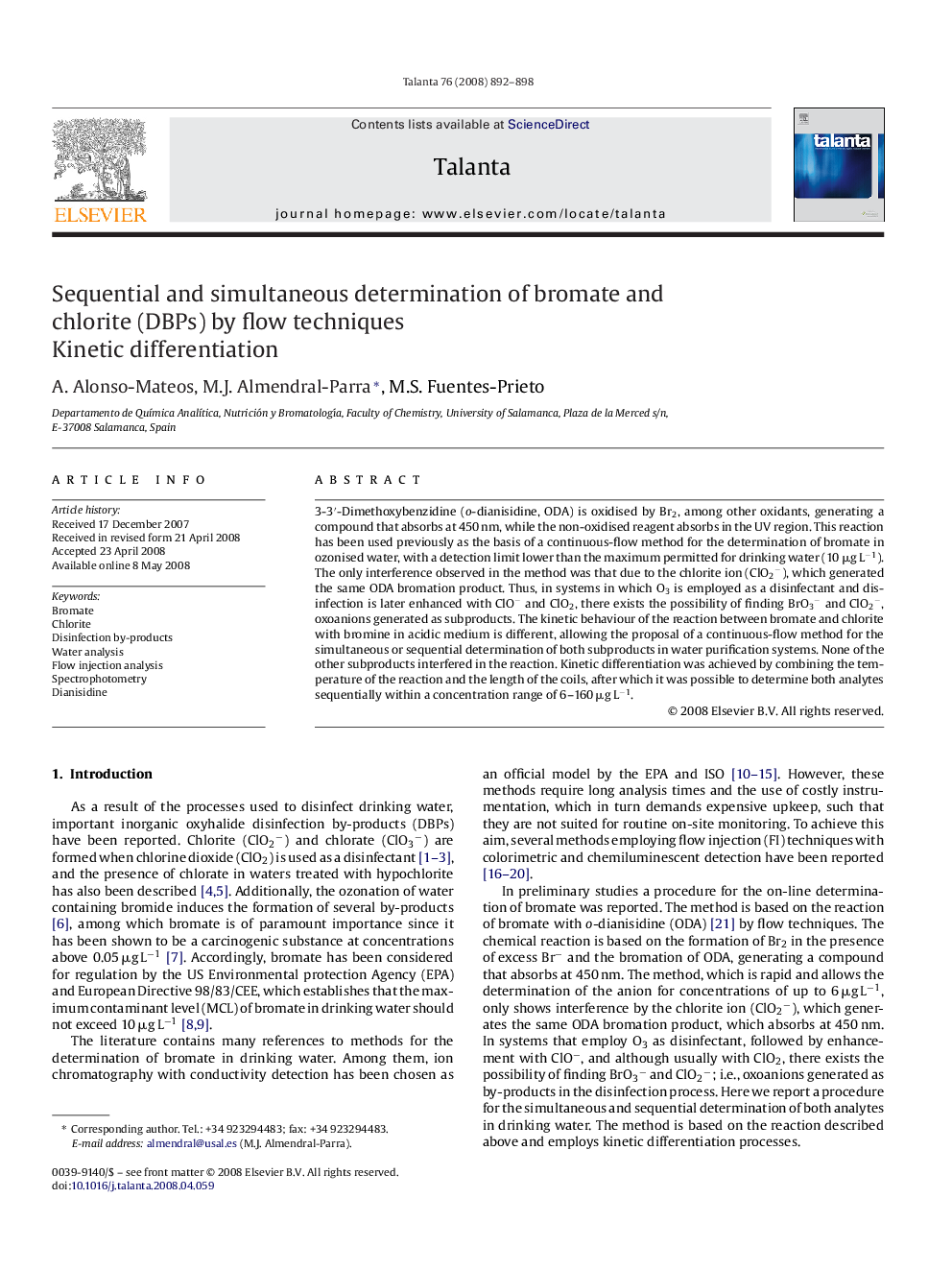| Article ID | Journal | Published Year | Pages | File Type |
|---|---|---|---|---|
| 1243397 | Talanta | 2008 | 7 Pages |
Abstract
3-3â²-Dimethoxybenzidine (o-dianisidine, ODA) is oxidised by Br2, among other oxidants, generating a compound that absorbs at 450 nm, while the non-oxidised reagent absorbs in the UV region. This reaction has been used previously as the basis of a continuous-flow method for the determination of bromate in ozonised water, with a detection limit lower than the maximum permitted for drinking water (10 μg Lâ1). The only interference observed in the method was that due to the chlorite ion (ClO2â), which generated the same ODA bromation product. Thus, in systems in which O3 is employed as a disinfectant and disinfection is later enhanced with ClOâ and ClO2, there exists the possibility of finding BrO3â and ClO2â, oxoanions generated as subproducts. The kinetic behaviour of the reaction between bromate and chlorite with bromine in acidic medium is different, allowing the proposal of a continuous-flow method for the simultaneous or sequential determination of both subproducts in water purification systems. None of the other subproducts interfered in the reaction. Kinetic differentiation was achieved by combining the temperature of the reaction and the length of the coils, after which it was possible to determine both analytes sequentially within a concentration range of 6-160 μg Lâ1.
Keywords
Related Topics
Physical Sciences and Engineering
Chemistry
Analytical Chemistry
Authors
A. Alonso-Mateos, M.J. Almendral-Parra, M.S. Fuentes-Prieto,
